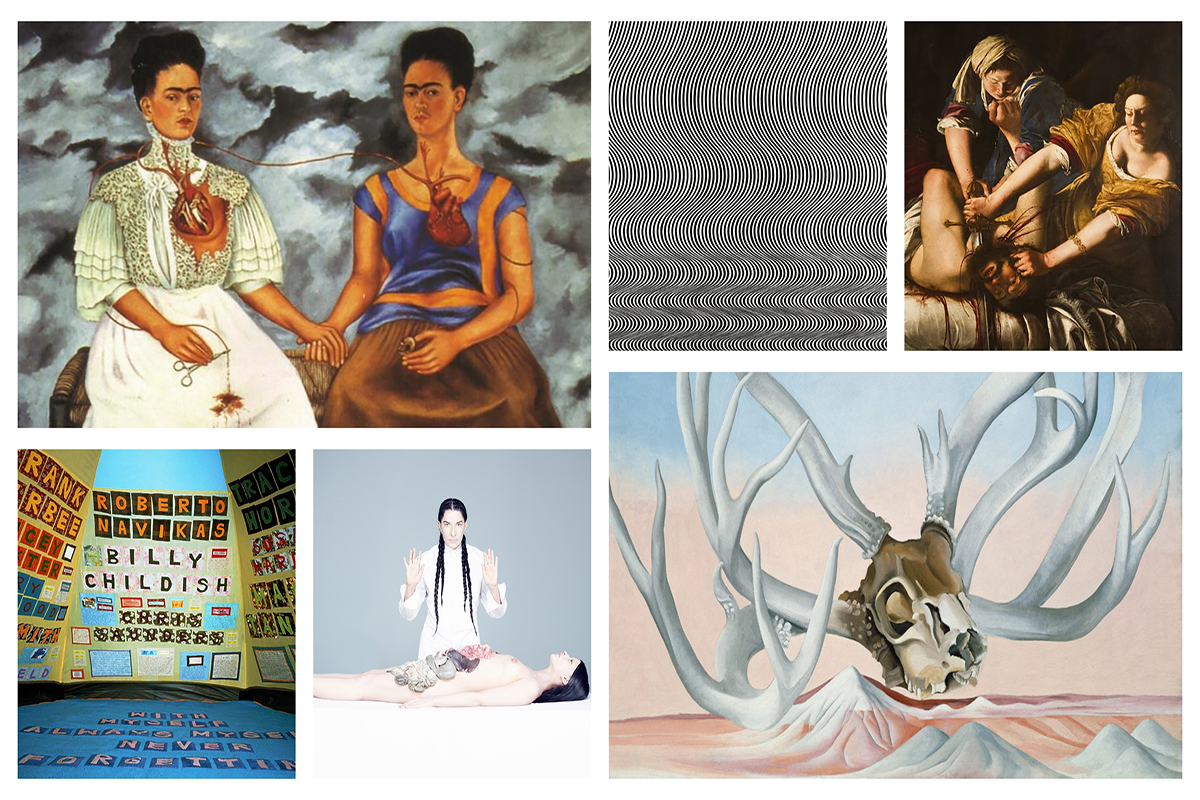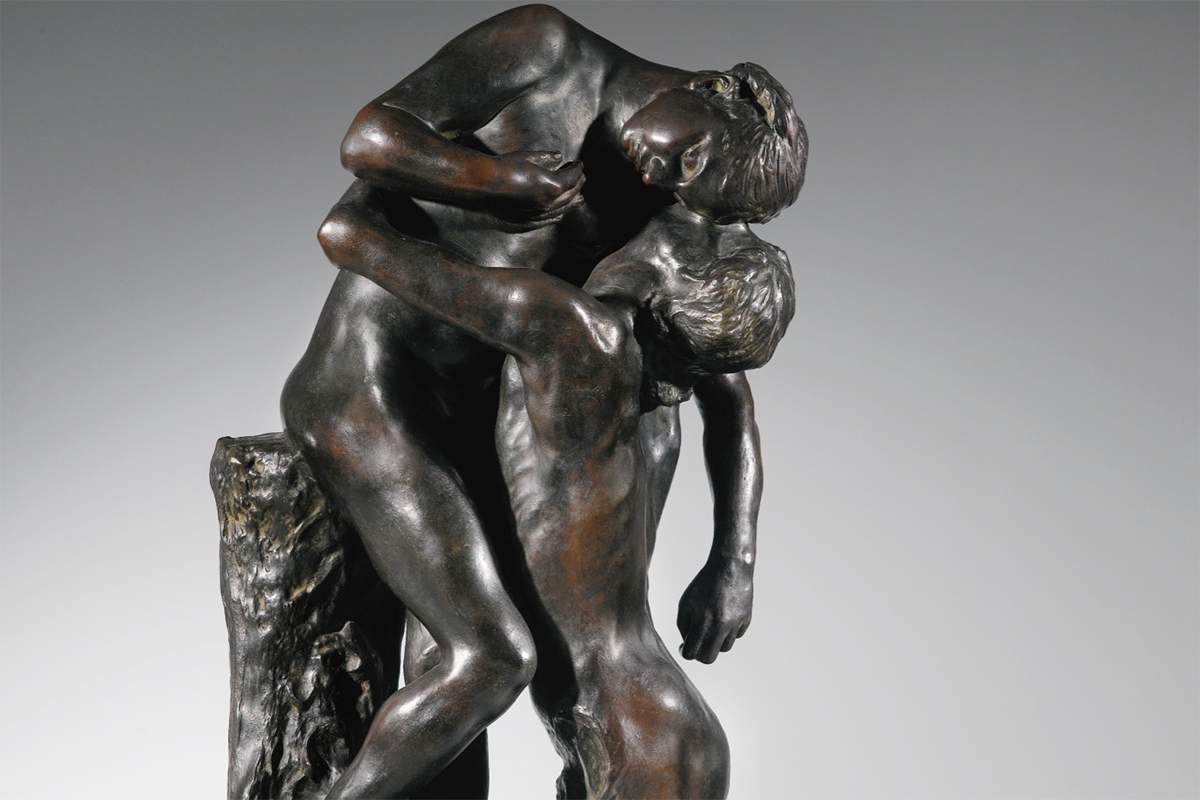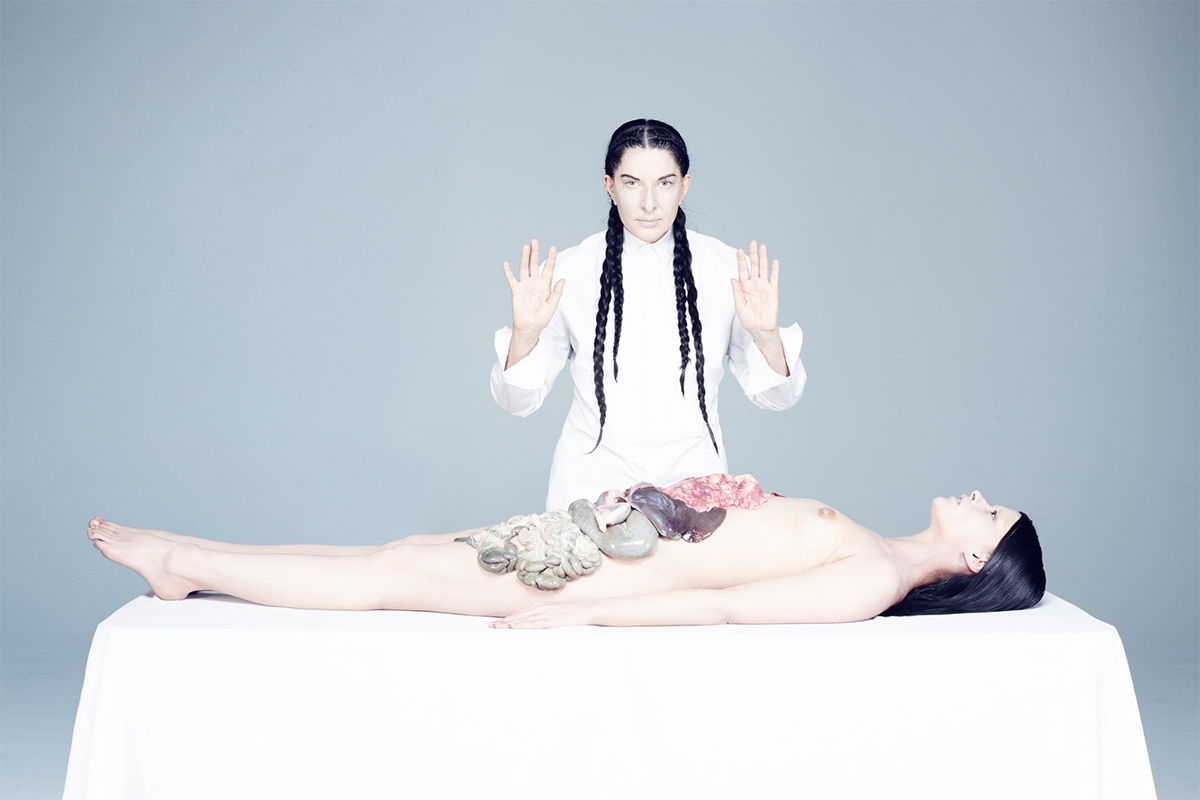 In art history, women are usually showcased as muses rather than artists, often overlooked and underrated throughout history. The following women (in no particular order) are world-renowned artists who were (and still are) pioneers in the art world. They broke boundaries and paved the way for today’s female artists, incrementing the reform of gender imbalance in the art scene.
In art history, women are usually showcased as muses rather than artists, often overlooked and underrated throughout history. The following women (in no particular order) are world-renowned artists who were (and still are) pioneers in the art world. They broke boundaries and paved the way for today’s female artists, incrementing the reform of gender imbalance in the art scene.
Artemesia Gentileschi (1593-1653)

Born on the cusp of the Baroque era, Artemesia Gentileschi built her reputation as one of Europe’s most sought-after artists. Gentileschi created highly dramatic, at times blood-ridden scenes that are thought to be more striking than any painting by a woman before. Most famously, she won a rape trial she brought up against her teacher, artist Agostino Tassi, in a time period where women were rarely believed over men. It was after the trial when she began one of her most famous paintings, Judith and Holofernes.
She was the first woman to receive a place in the Accademia del Disengo, widely considered the greatest honor offered to painters during this era. Through her paintings, Gentileschi gained freedom. After being given the induction, she was able to travel by herself, sign contracts and buy paints and supplies without permission from a man.
Élisabeth Vigée Le Brun (1755-1842)

French artist Élisabeth Vigée Le Brun is a well-known portraitist of the Rococo period. One of her clients was France’s queen, Marie Antoinette, of whom she painted over 30 portraits. At 15, Le Brun was making enough money to sustain herself, her mother and her younger brother through her paintings. After being trained by her father, who was also a portraitist, she entered Paris’ Academy of Saint Luke when she was 19. Two years later, she married a painter and art dealer, Jean Baptiste Pierre LeBrun, who essentially assisted her in gaining valuable access to the art world.
She became one of the only four females in the Parisian Royal Academy and she developed a high artistic, social and political profile. She was forced to flee France with her 9-year-old daughter when the French Revolution began. Le Brun traveled through Italy, Austria, Czechoslovakia, Germany and spent 6 years in Russia creating portraits for the Russian royals and aristocrats. Years after returning to Paris and getting her citizenship renewed after the revolution, Le Brun published Souvenirs, her three-volume memoir.
Berthe Morisot (1841–1895)

Morisot became one of the most well-known Impressionist artists in the 19th century. Known for her stroke work, her sketch-like imagery, and unfinished-looking artwork explored impressionist themes of modernity.
A traditional theme throughout her work was feminine routines — bathing, touching up hair and makeup and getting ready. This was revolutionary during her time because male artists tended to make their subjects sensual and borderline erotic, with emphasis on cleavage, bending over and undressing. Morisot’s paintings, however, tend to display the woman’s experience as she is getting ready and looking at herself in the mirror. The focus is on their own introspection. Morisot achieved significant recognition during her lifetime. Critics during the 19th and 20th-centuries focused on the feminine qualities of her work: intuitiveness, spontaneity and delicacy.
Camille Claudel (1864-1943)

A talented French sculptor, Camille Claudel began to sculpt at the mere age of 15. She engaged in a tumultuous affair with her mentor, Auguste Rodin, for several years that brought them both international recognition. Once Claudel cut it off, she entered in the height of her artistic career. By 1893, Claudel secluded herself in her studio home to focus on creating work that would establish her own reputation, and separate her from Rodin.
However, her talent and the artwork she produced caused a lot of backlash and criticism from the state and the press. Her sculptures were often censored due to being deemed as overly sensual and inappropriate. She worked constantly, becoming increasingly reclusive and delusional over time. She became consumed with Rodin’s injustice to her after years of unfulfilled promises and cheating and began to feel persecuted by him and his “gang.” She maintained exhibitions at recognized salons (the Salon d’Automne, the Salon des Indépendants) and at the Bing and Eugène Blot galleries, but would just as often destroy and shatter every piece of work in her studio.
Eventually, she was involuntarily committed to a mental asylum in 1913. A year later she was transferred to another asylum, where she stayed until her death 30 years later. Her complicated private drama caught the attention of popular and scholarly attention, but it was her mastery in projecting narrative in marble and bronze sculptures that led her to influence future artists.
Georgia O’Keeffe (1887-1986)

Also known as the “Mother of American modernism,” Georgia O’Keeffe was an American painter who produced avant-garde impressionist images that disputed perceptions and constantly changed throughout her career. She was one of the first female painters to achieve international accolade from critics and the public. Her famous flowers, dramatic cityscapes and landscapes and images of bones against the sheer desert sky are archetypal contributions to American Modernism.
She attended the School of the Art Institute of Chicago and the Art Students League in New York, studying under William Merritt Chase. Internationally recognized photographer and art dealer Alfred Stieglitz was the first to exhibit her artwork in 1916 and later on became her husband. Her work soon shifted from charcoal drawings to oil paintings, which gave the illusion of magnified subjects in their natural form. Her first large-scale flower painting, Petunia, was exhibited in New York City in 1925 and began the start of a period of exploration of the theme of flowers that would last throughout her career.
She traveled internationally, painting scenery from Peru and Mount Fuji. In her early 70’s, she started a new series focusing on her landscape views from the airplanes she’s been on. After suffering from irreversible vision loss, she painted her last unassisted painting in 1972. However, she had several assistants help her to create art again until she passed at the age of 98. Even after her death, O’Keeffe was breaking boundaries for women in art. The Georgia O’Keeffe Museum sold Jimson Weed/White Flower No.1, 1932 for $44 million dollars. This set the record for an artwork sold by a female artist.
Frida Khalo (1907-1954)

Mexican painter Frida Khalo was best known for her self-portraits that contemplate themes of identity, pain, the human body and death. She is often recognized as a Surrealist, although she denied that title. She was also well known for her tumultuous relationship with Diego Rivera, whom she married twice.
Khalo had a tragic start to life, suffering from polio at the age of 6 and was involved in a horrible bus accident where she suffered multiple fractures of her spine, a shattered pelvis and other broken bones. Her focus on painting began when she had to stay still as a teenager, healing in her body cast. One of her most well-known paintings, The Broken Column, is a self-portrait showing the devastation done to her body from the accident and the 30 surgeries she’s had in her lifetime. Of her 200 paintings, sketches and drawings, life experience and pain are a common theme. Her own physical and emotional pain are distinct in her 55 self-portraits.

Her stoic gaze in her self-portraits was always prevalent, along with the long neck and fingers, showing her interest in Mannerism. After marrying Rivera in 1929, her personal and painting style changed. She painted herself wearing the traditional Tehuana dress, consisting of a flowered headdress, loose blouse, gold jewelry and a long skirt. Frida and Diego Rivera (1931) shows her inspiration in Mexican folk art. Her subjects are more flat and abstract than in her previous work.
Kahlo did not sell many paintings while alive, although she painted occasional portraits on commission. She had only one solo exhibition in Mexico in her lifetime, just a year before her death in 1954. Her self-portrait, Roots, set a record as the most expensive Latin American work ever purchased at an auction. It was sold for $5.62 million dollars in New York in 2006.
Yayoi Kusama (1929-present)

Yayoi Kusama is a pioneering Japanese artist who works in a variety of media: painting, drawing, sculpture, film, performance, and immersive installation. Her work consists of hallucinatory paintings of loops and dots and physical idealizations of infinity. Kusama left Japan and came to America in 1957, crediting Georgia O’Keeffe with giving her the courage to leave. When she arrived, she soon found her art career exploding. She undauntingly took on the male-dominated world of Abstract Expressionism and became one of the most avant-garde artists in her time.
Kusama had a form of psychosis in her childhood, causing bright hallucinations that would later shape her art. She began to draw and paint with incredible concentration. After escaping from her abusive home, she attended art school and moved to New York City in 1958. The “Priestess of Polka Dots,” as she is sometimes called, had her first retrospective open at the New York’s Center for International Contemporary Arts in September 1989. In 1973 she returned to Japan and is now one of Japan’s most renowned contemporary artists. Her work has continued to entice the public’s imagination and the senses, including disorienting walk-in installations, public sculptures and the “Dots Obsessions” paintings.
Bridget Riley (1931-present)

Born in England, Bridget Riley is a revolutionary abstract artist. She started painting figure subjects in a semi-impressionist manner, then switched to pointillism around 1958 and mainly created landscapes. In 1960, she began to explore the dynamics of the optical phenomena style. And so, ‘Op-art’ was born. Her artwork, such as Fall, 1963, created a dizzying effect on the eye. Op Art became extremely popular in the 60s, with fashion, design and advertising industries falling in love with the graphic patterns that come to life. Riley became Great Britan’s favorite art celebrity.
As a child, Riley recalled having a lot of freedom and spent a lot of her time roaming on the cliffs and beaches near her home. She spent hours watching the changing light, color and cloud formations. She has said that these early memories have had a large impression on her visual awareness throughout her life. After studying at the Royal College of Art from 1952 to 1955, Riley went on to be a teacher, which she later found to be unsatisfying. Her paintings attracted global attention during the “The Responsive Eye” exhibition in the Museum of Modern Art in New York in 1965.
Today, Riley is still producing innovative artwork. Exhibits of her work are held internationally – Sydney, Tokyo, New York, London, Zurich are just some of the cities that house her work.
Marina Abramovic (1946-present)

Born and raised in Belgrade, Serbia, Marina Abramovic is a visual performance artist known for using her body as both the subject and medium for her performances to test her physical and emotional limits. She is known for pushing these limits and risking her own life in order to investigate sensation, transcendence, and self-transformation. She incorporates performance, sound, video, sculpture, and photography in her visual performance artwork. She’s received many honors, such as a Golden Lion at the 47th Venice Biennale, a Bessie and awards from the International Association of Art Critics.
Her performances include repetitive behavior, actions of long duration, intense public interactions and energy dialogues, and her work has fascinated and repelled live audiences. Life and death are recurring themes in her work and are signified with symbolic vidual props such as crystals, knives, bones or pentagrams. Her work is inspired by her personal history of living under Communist rule in the former Yugoslavia and in recent contemporary events, such as the wars occurring in Serbia and around the world.
For example, in Rhythm 10 (1973), Abramovic methodically stabbed the spaces between her fingers with a knife, drawing blood occasionally. In Rhythm 0 (1974) she stood still in a room for six hours with 72 objects around her, ranging from a rose to a loaded gun, that the audience was invited to use on her however they wished. These pieces provoked controversy not only for their danger but also for Abramović’s periodic nudity, which would later become a regular component of her work. In 2010, she had her first U.S. retrospective, Marina Abramović: The Artist Is Present, containing around fifty works that spanned over 40 years of her early installations, sound pieces, photographs and solo and collaborative performances she created with Ulay Uwe Laysiepen. She performed for 716 hours in “The Artist is Present” at the Museum of Modern Art in New York. During this time, she held eye contact with over 1,000 strangers over three months. She now runs the Marina Abramovic Institute, an organization that teaches young artists time-based work. She lives and works in New York City.
Tracey Emin (1963-present)

Tracey Emin is a conceptual artist born in London and is known for her works that range across media, including paintings, drawings, photographs, videos, sculptures and installations. After being labeled as the “enfant terrible” of the Young British Artists in the 1980s, she began to attract public attention after her seminal works. Everyone I Have Ever Slept With 1963–1995 (1995), was a tent decorated with the names of everyone Emin ever shared a bed with and was shown at Charles Saatchi’s Sensation exhibition held at the Royal Academy in London. My Bed (1998)—was an installation of her own unmade, messy bed at the Tate Gallery—consisting of her own unmade dirty bed, in which she had spent several weeks drinking, smoking, eating, sleeping and having sexual intercourse. The installation presented worn condoms and blood-stained underwear. Emin provocatively contributed to the feminist debate with the raw, exposing nature of her art.
In December 2011, Emin was appointed Professor of Drawing at the Royal Academy. She is one of the first two female professors since the Royal Academy was founded in 1768. She currently resides in London.


